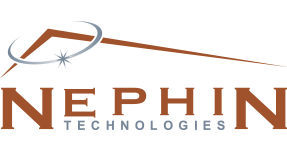Smart Building Opportunities and Design
While attending the yearly Consumer Electronics Show we’re often asked why a company involved in commercial office space and IT/Communications/Security infrastructure design for corporations, like Nephin, is attending such a consumer show. Our response is simple – consumers are the ones driving the smart office evolution. Wi-Fi and smart phones were consumer products that changed the business and enterprise technology landscape. Now consumers, who are employees and tenants in the commercial real estate space, are expecting their smart home capabilities to be available in their office. According to a Deloitte conference session on Jan 9th, in an era where skilled workers are in short demand, businesses are noticing that worker retention is now influenced by smart building features.
Our goal for this series of posts is to clarify what constitutes a smart building, how to pursue it, along with lessons we’ve learned to help you in your understanding of smart buildings and strategies around implementation and operation. We encourage you to post your questions and we’ll address where possible in a Q&A format in subsequent posts!
What is a Smart Building?
Unfortunately, and surprisingly, there is no formal definition or acceptance criteria for a smart building. Developers may characterize their buildings as smart, and manufacturers of smart building products will claim that their products will make it smart and efficient. But without any formal definitions, it is difficult for the consumers, tenants, etc. to know what the term means for the particular property. In our work at Nephin helping clients implement and operate smart buildings, we use the following definition to clarify the characteristics of a smart building:
a. uses a standards-based computerized and networked platform for centralized monitoring, management and automation of building systems and infrastructure;
b. system design and deployment should follow a converged architecture approach, optimized to ensure systems/components/functions are resilient but duplicated by each trade;
c. it must be deployed in a secure manner in adherence with IT and cyber security best practices;
d. it must be scalable and expandable without ripping/replacing existing hardware, or extensive, customized programming or software development;
e. the systems must provide easy access to clear reporting and trend analysis, actionable data and intelligence to a broad base of users, not just the building engineer;
f. supports on-premise and remote/cloud capabilities.
The primary objective is to ensure that whatever smart systems are installed, that they are done in a structured and secure fashion, and that an overall set of goals and objectives, strategy, and plan be developed prior to implementation and deployment. For example, proprietary systems that lock an owner into a specific brand or ecosystem may not be the best approach, as they often cost more over time and prohibit access to new capabilities from alternate providers. It may also be a more effective strategy for building owners to deploy systems in phases, given the rapid pace of product development.
If you have questions on the above, or would like to learn more about smart buildings and their implementation or operation, contact us at www.nephin.co.
Our next planned post is “Why the smart building design process must be redesigned”.
